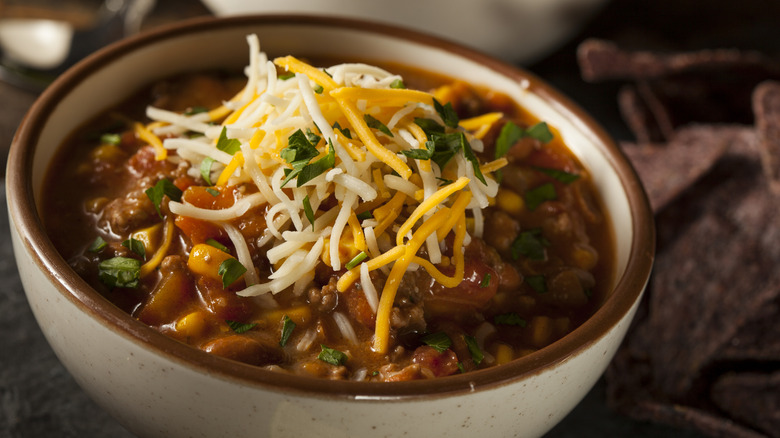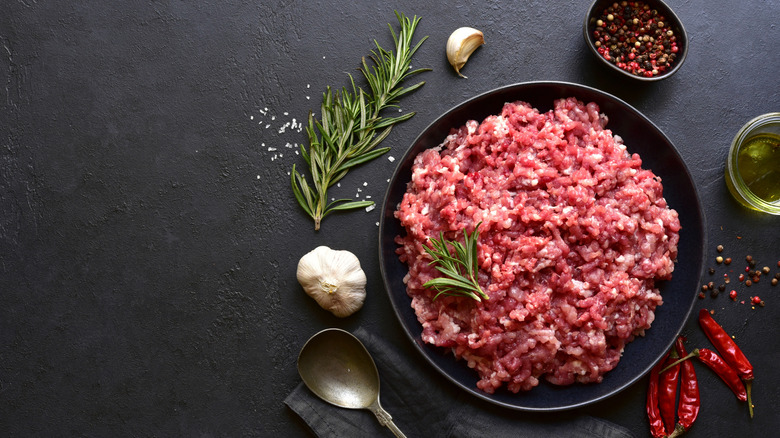The Perfect Time To Add Spices To Your Homemade Chili
We may receive a commission on purchases made from links.
Some of the best things in life require a bit of patience, and that's definitely true of chili. As chili simmers, the collagen in the meat will begin to break down, the flavors will blend into each other, and the whole will become greater than the sum of its parts. That's why recipes like a slow cooker chili will take at least six or seven hours, but on the plus side, that gives you a whole day of smelling deliciousness in the making.
So, let's talk about spices. Although you can definitely use your own seasoning mix or add your spices based on your go-to recipes, we're also fans of keeping something like McCormick's Original Chili Seasoning Mix on hand. Why? It's a great base that you can add heat, spice, or salt to in order to shape your own flavor profile — and it is important to add spices at the start. The sooner you add your spices, the sooner the flavor of your chili will start to develop, and you'll know if need to add more cayenne, paprika, or any other spice. And let's be honest, one of the best perks of cooking is the taste-testing.
This brings us to our most important tip for truly stellar chili. If you're browning your meat then adding it to the slow cooker with your spices and sauces, you're missing out. Blooming your spices will take your chili from delicious to restaurant-worthy, and if you're wondering what that means, don't worry, we've got you covered.
Blooming your spices kicks off a flavor explosion
Let's use an example here, and say you're making a straightforward chili con carne. You'll start with browning your beef, and that's where the spices should come into play. If you add your spices when you're browning the meat, they'll react with the fat that's coming out, and as they do, they'll start to release all those flavors. If you've heard the term "blooming" used regarding coffee grounds, it's not a dissimilar idea: Letting water sit on the coffee grounds draws out more flavor, and cooking spices in fat does the same thing.
There's some fun science going on here, and it works because of the way many spices react with fats. Cooking fat-soluble spices transfers flavor into the fats — and the meat — and when you finally sit down to dig into that chili, the flavorful spice compounds in the fat coat your mouth for that rich mouthfeel that truly good chili is known for.
Starting with spices also means that they'll have longer to slow-cook and blend together. If you're making chili, you're probably making enough for leftovers, right? We all know that leftover chili tastes better on the second day, and that's because when food with aromatic spices is cooled and reheated, the series of reactions between spices, fats, proteins, and other molecules continues to happen. The more time everything has to blend, the better the chili is going to be — and starting with spices maximizes your time.

